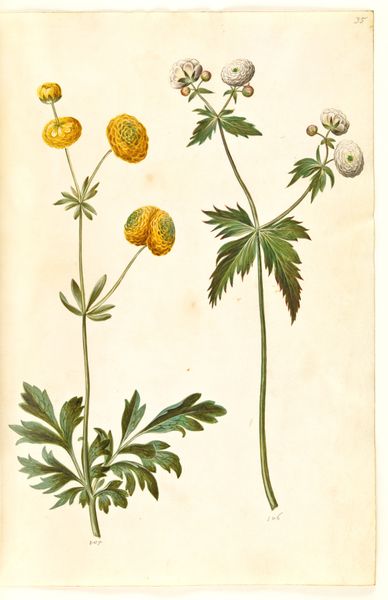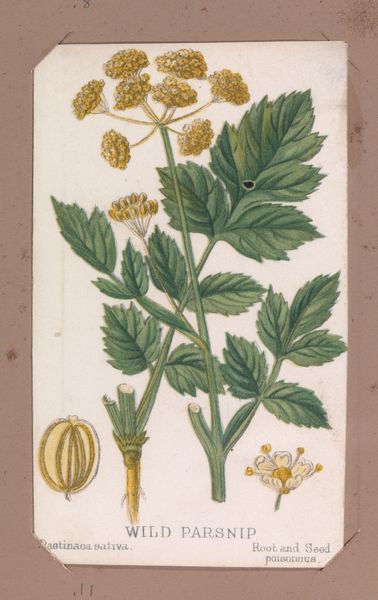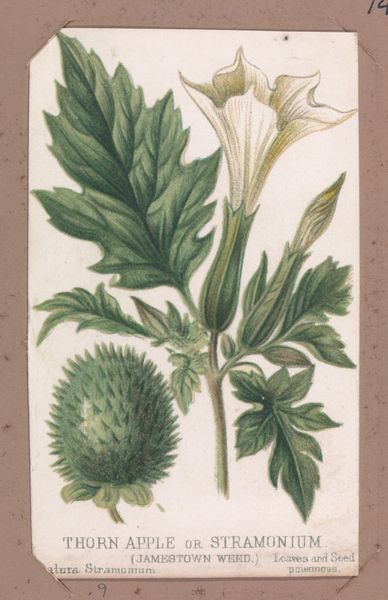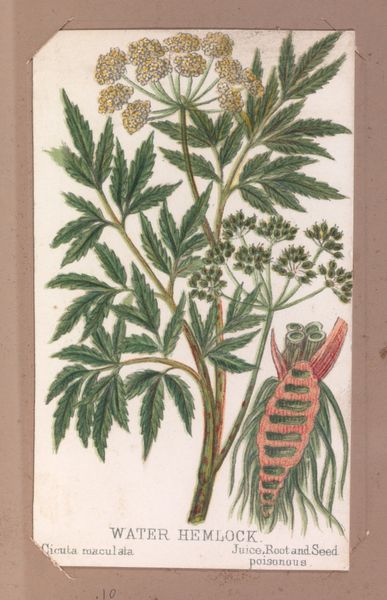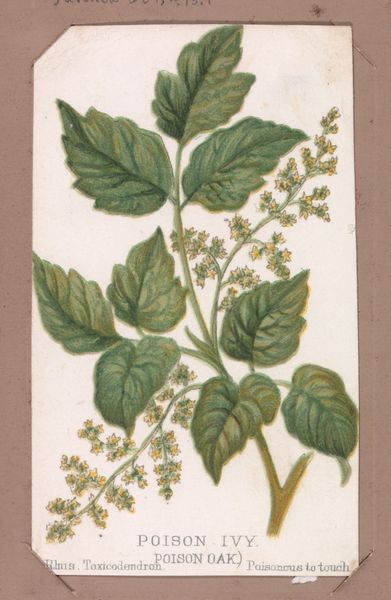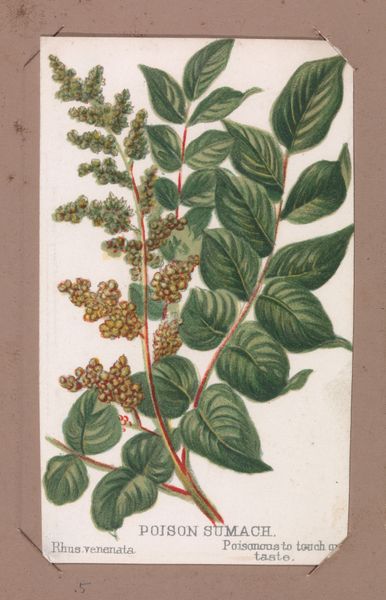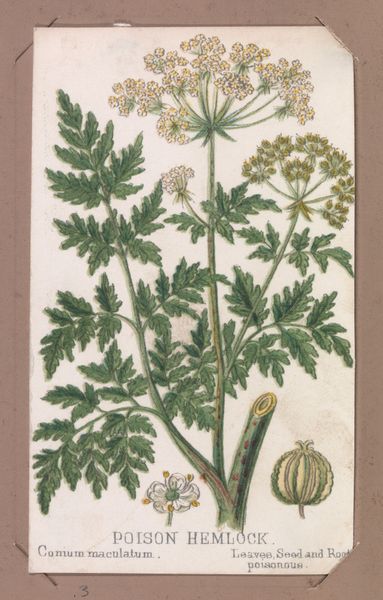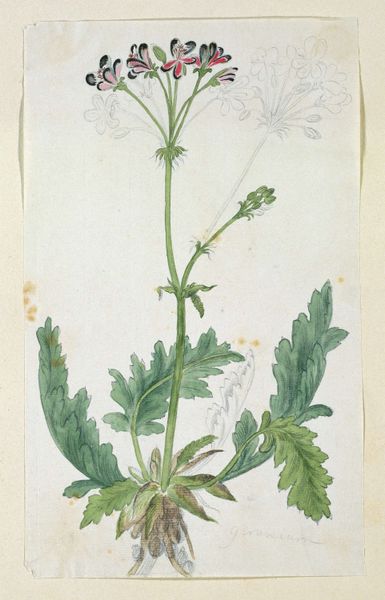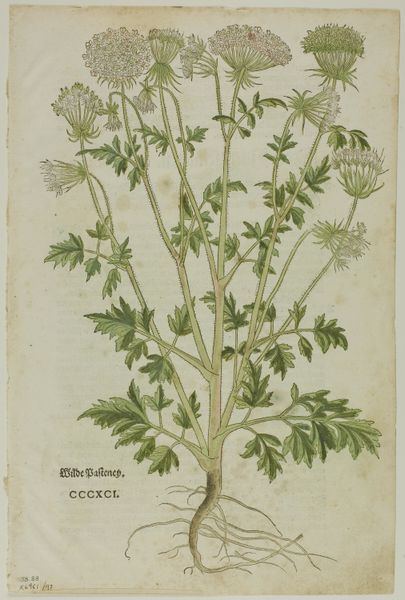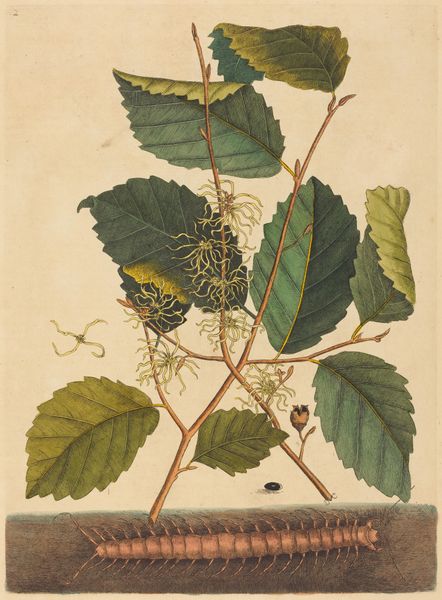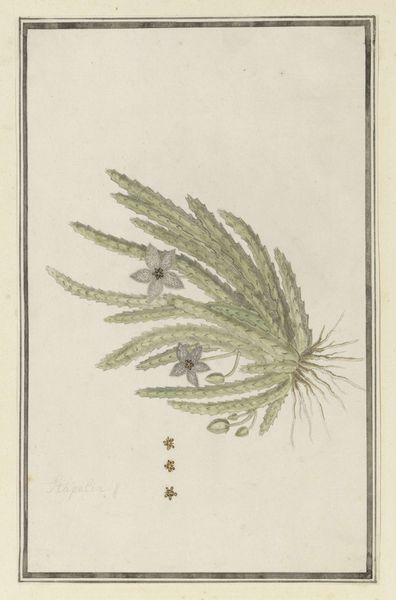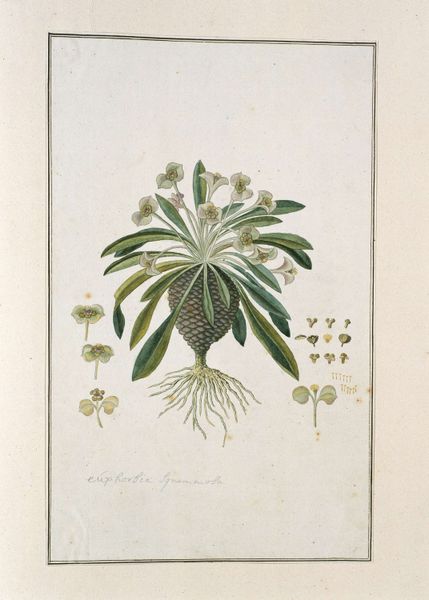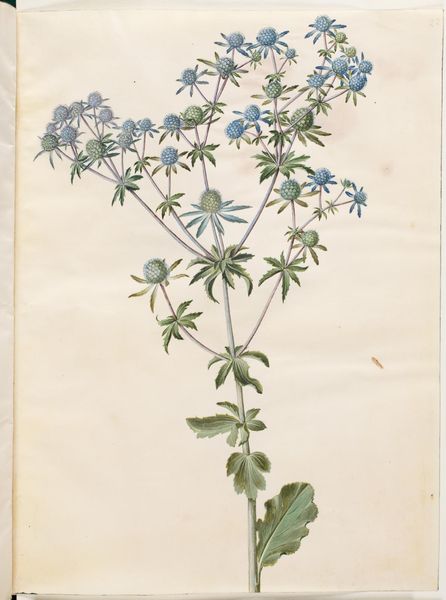
drawing, coloured-pencil, print
#
drawing
#
coloured-pencil
# print
#
coloured pencil
Dimensions: Sheet: 3 7/8 × 2 3/16 in. (9.8 × 5.6 cm)
Copyright: Public Domain
Curator: Here we have an intriguing botanical study, "Stinging Nettle" from the Plants series, created between 1862 and 1869 by Louis Prang & Co. It's a colored-pencil drawing, later reproduced as a print, residing now at the Metropolitan Museum of Art. Editor: It has such a peculiar beauty, doesn't it? Knowing the subject is a stinging nettle gives me a feeling of unease, a sense that this pretty picture hides a sharp, almost treacherous, quality. The details are exquisite, but those tiny prickles jump out at you. Curator: It is fascinating how Prang's firm, known for its advancements in chromolithography, chose to depict something so… humble. This was a period deeply engaged with botanical classification, fueled in part by colonial exploration and a desire to catalog the natural world. These kinds of botanical prints had significant cultural value in education and popular science. Editor: The stinging nettle has a long, complex history, appearing across different cultures as a symbol of both harm and healing. Even that scientific descriptor on the print—"Poisonous to touch"— adds to the mystique, doesn't it? The open flower here carries implications about herbal medicine traditions and folk wisdom regarding plants. Curator: Indeed, we see the interesting interplay of the objective scientific approach with the very subjective, lived experiences of encountering these plants. Prints such as this disseminated scientific knowledge but were also instrumental in shaping societal perceptions of the natural world, framing nature in terms of utility and control. Editor: There's a tension embedded in this image. We admire its detail and delicacy, but also recognize the power it holds to cause harm. Even beyond its poisonous properties, the Stinging Nettle can symbolize defense, protection, even resilience. These visual attributes enrich its seemingly straightforward botanical presentation. Curator: The very act of transforming a weed, a nuisance, into an object of art elevated its status and underscores the societal impact of even the simplest of imagery. The scientific and commercial impulses, along with evolving ideas about health and the environment, all converge in these beautiful yet practical illustrations. Editor: It reminds me that symbols always possess multiple layers, even in scientific depiction, reflecting shifting attitudes. Thank you for drawing that out. Curator: And thank you for enriching my perspective through the symbolic lens.
Comments
No comments
Be the first to comment and join the conversation on the ultimate creative platform.
